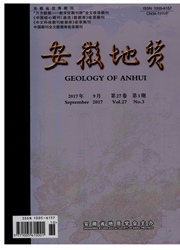

 中文摘要:
中文摘要:
通过盆栽实验,研究了不同营养土改良的铜尾矿对旱柳(Salix matsudana)扦插枝条生长及根系特性的影响。处理方式分别为TA100(100%尾矿)、TA80(80%尾矿+20%营养土)、TA60(60%尾矿+40%营养土)、TA40(40%尾矿+60%营养土)、TA20(20%尾矿-80%营养土)、TA00(100%营养土)。研究结果发现,旱柳枝条在5种处理方式下均可生根成活,但长势存在差异。随着尾矿含量的降低,旱柳枝条的生物量呈现出增加的趋势;随着尾矿含量的降低,旱柳枝条不定根数目增多、平均根长及最长的根长增加,根系活力先增强后降低。结果表明,旱柳可用于铜尾矿废弃地植被恢复,利用营养土改良有利于柳条不定根的形成和生长。
 英文摘要:
英文摘要:
Pot experiment was performed to study the effect of copper ore tailings improved with different nutrient soils on the growth of S. matsudana cuttings and root system features. The treated tailings are TA100(100% tailing), TA80(80% tailing+20% nutrient soil), TA60(60% tailing+40% nutrient soil), TA40(40%tailing+60% nutrient soil), TA20(20% tailing +80% nutrient soil) and TA00(100% nutrient soil), respectively. The research results indicated that all cuttings could take root in the five treated tailings and survive, but showed difference in the way of growing. With decreasing content of tailings, the biomass of cuttings tended to increase, the number of adventitious roots, average length of roots and length of the longest root added, and root activity strengthened first, and then weakened. It is concluded that S. matsudana can be grown in copper ore tailings land for vegetation restoration, and adding nutrient soil to the tailings is favorable to formation and development of the adventitious root.
 同期刊论文项目
同期刊论文项目
 同项目期刊论文
同项目期刊论文
 期刊信息
期刊信息
